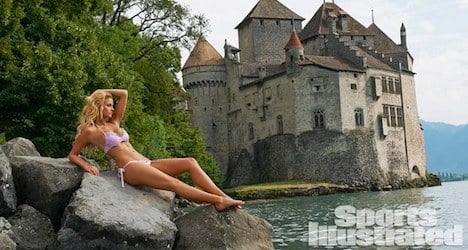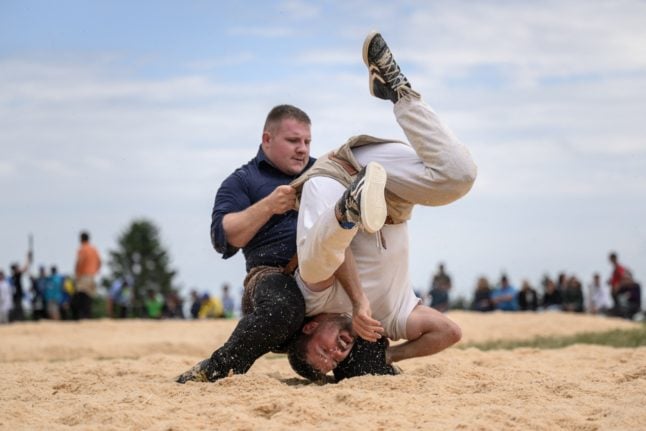Bock and another skimpily attired model posed for photos in and around the lake for American magazine Sports Illustrated’s 50th anniversary swimsuit issue.
The annual issue, described by Vanity Fair as a cash register in the shape of a girl, went on sale on Tuesday, annoying feminists but pleasing others, including the canton of Vaud’s tourist office.
The office and Switzerland Tourism rolled out the red carpet for the magazine when it sent its photography team and cast of bikinied models to Switzerland for six days last August for on-location shooting.
“This project is a unique opportunity to present at a large-scale international level some of our major sites, such as the chateau of Chillon and Lavaux (the Unesco-designated vineyard area overlooking Lake Geneva),” Andreas Banholzer, director of the Vaud tourist office said in a news release issued on Tuesday.
An estimated 70 million readers of the swimsuit issue, published between the American football and baseball seasons, will see glimpses of Lake Geneva scenery — behind the bathing belles at the centre of attention.
Bock, from Canada, and Genevieve Morton, a model from South Africa, posed in the town of Vevey, in the vineyards of Lavaux and on the shores of the lake and in boats on the water.
Morton even provocatively posed topless, with one arm strategically placed to avoid revealing too much, on a sailboat in the middle of the lake with the Vaud Alps in the background.
Meanwhile, near Zermatt, American Emily DiDenato modeled a two-piece swimsuit in front of Switzerland’s iconic Matterhorn.
The issue features the likes of Kate Upton, Tyra Banks and Christie Brinkley who posed for shots elsewhere, in such places as the Cook Islands.
Our jaws just dropped @emilydidonato1! http://t.co/VhryA3gN1f #SISwim50 pic.twitter.com/kfvICQh9Dk
— SI Swimsuit (@SI_Swimsuit) February 18, 2014



 Please whitelist us to continue reading.
Please whitelist us to continue reading.
Member comments